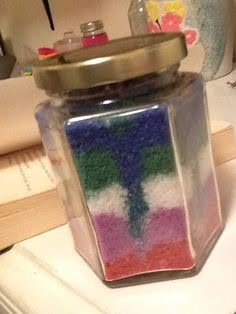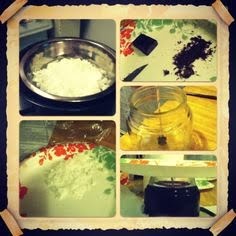Introduction
Organic candle making wax is a type of wax that is primarily made from materials derived from natural sources. It can include a variety of renewable resources like vegetable oils, beeswax, and the like. Using organic wax for your candles helps to avoid introducing toxic chemicals, like artificial fragrances or colors, into the air as it burns. Additionally, organic waxes help to reduce environmental impact by being more eco-friendly than traditional paraffin waxes. Organic candle making wax provides an excellent alternative for those looking to create candles with a natural and sustainable feel.
Benefits & Safety of Organic Wax
Organic candle making wax is a great option for those looking to have an environmentally friendly product that looks and smells beautiful but does not contain any harsh chemicals. Organic wax is made from natural ingredients like vegetable and soybean oils, which makes it more sustainable than chemically-made wax. It also burns cleaner than paraffin with less soot and emissions released into the atmosphere as well as being non-toxic if ingested, making it safer to breathe while burning around children or pets. Further benefits of using organic candle making wax include ease of use (it melts quickly and evenly), a longer burn time when compared to paraffin candles, and a lower melting point which helps create unique shapes in container candle designs. In addition, these candles generally produce a stronger scent scent when compared with other types of wax, such as paraffin. Also, because organic wax contains no additional dyes or additives, it has a much longer shelf life then certain artificial candles on the market – enabling you to store your handmade creations for future use!
Different Types of Organic Wax & Their Uses
Organic candle making wax is a type of wax made from renewable sources such as vegetable oil, sunflower butter, and coconut oil. This type of wax is suitable for use in eco-friendly candles and decorative pieces where the source ingredients are known to have been produced organically. Soaps, lotions, lip balms, and other body products can also be formulated with this type of wax. Organic wax can come in a variety of forms for construction. The most popular types include soy, beeswax, bayberry, paraffin-free stearic acid and candelilla.
Soy wax is popular among many organic candle makers due to its ease of use and clean burning characteristics. It has a soft texture when melted but becomes hard when cooled; ideal for votive or container candles. It has a very low melting point which makes it easier to work with and cooler when burning than beeswax or paraffin-free stearic acid ” perfect for applications with non-heat resistant containers where the container should remain cool during use. Soy produces a creamy white appearance when used to make candles and will hold color dyes or essential oils like a champ.
Beeswax is commonly used in combination with other organic waxes like soy or palm because it gives candles a great overall structure that helps keep wicks upright while burning ” not to mention the great honey scent it exudes throughout your space! If you are looking for an all natural ingredient that helps strengthen however won’t leave any leftover residue after burning; this could be just what you need! Beeswax is also able to hold colors better than other waxy alternatives which is advantageous if you desire vibrantly colored tapers
Paraffin-Free Stearic Acid provides hardness as well as increases burning stability while also supporting rigidity in candle construction – making it great choice for pouring pillars that last longer without being weighed down by heavier oils typically found within vegetable based waxes like soybean or sunflower oil.. This particularity makes it the ideal solution if you want something softer than 100% beeswax yet carrying more control over how closely formed structures are together versus using usually blended offerings like bayberry blends which are more prone to leaving wider openings during molding process due their higher liquid consistency
Candelilla Wax offers potential users candid options still retaining substances found within much of standard personal care products but completely eliminating paraffins from mix ” as otherwise present within standard blend offerings – imparting an entirely different looking presentation when poured into appearances similar to crystal clear ice buckets offering unique advantages available unlike alternatives that leave customer going elsewhere for same exact purpose! As with many choices surrounding candle making process — selecting right resin may require tests specific needs before creating large batches — but requires minimal effort as only relatively small amounts are needed during experiments allowing even home hobbyists access same conclusions professional productions houses were competing prior years back once again readily available pricing parity alike!
Comparison of Brands of Organic Wax
Organic Candle Making Wax is a type of wax made from natural products such as vegetable oils, beeswax, or soy wax. It’s an ideal choice for those looking to create soy candles and other natural scents because it typically has fewer chemicals. Many brands offer organic candle making wax in a range of colors, fragrances and sizes so it’s important to research which product best suits your needs before you purchase. Environmental and ethical considerations can also be taken into account when choosing one brand over another.
Some popular brands of organic candle making wax include Bees Wax By Nature, Soapbox Soycandles and Pure Naturals, who all offer a range of colors and scents for their products. Generally speaking, Bees Wax By Nature offers the most eco-friendly option as it does not contain any colorants or added fragrances, only pure bees wax made by artisan beekeepers throughout Europe. Soapbox Soycandles on the other hand provides an extensive selection of soy-based waxes that are also vegan friendly and are heavily fragranced with essential oils. Lastly Pure Naturals sources sustainably produced soy wax which is delicately fragranced with essential oils, free from synthetics and parabens.
In conclusion each brand of organic candle making wax has its own unique set of strengths and weaknesses, such as scent selection or environmental friendliness. No matter what your preferences may be there will always be a brand to fit your specific needs so research all available options before investing in a particular kind of organic wax for your candles.
The Advantages of Organic Wax over Synthetic Wax
Organic waxes such as beeswax and soy wax offer several advantages over traditional synthetic waxes when it comes to candle making. For starters, organic waxes are natural, so they do not contain any of the potentially harmful chemicals found in synthetic waxes. This makes them a better option for those looking to create organic candles or avoid potential health risks associated with burning synthetic wax.
Organic wax also has superior scent retention compared to synthetic candles ” allowing for more of the natural fragrances of essential oils to come through without interference from a “chemical” smell. Additionally, organic waxes have greater adhesion properties so they stay in place better and burn longer than most synthetic materials. Finally, beeswax and soy wax both have very low melting points which is important for preventing overheating issues during the candle-making process as well as providing an even flow of melted material throughout your entire mold.
Combining Organic Wax & Essential Oils to Maximize Scent
Organic candle making wax can be a great way to add unique scents to your home or office. You can combine organic wax with essential oils to create beautiful and fragrant candles that will last for hours. Organic waxes are made through processes that do not leave behind toxic residues, such as synthetic waxes. These organic materials are free from paraffin, phthalates, and other chemicals found in traditional waxes. Furthermore, many of these organic waxes are sustainable products, often being sourced from organic sources.
When blending together different types of wicks and essential oils for your candles, it’s important to keep in mind the strength of the scent you desire. Essential oils are a great way to make impactful aromas for any space. There are several ways to maximize their use when crafting candles ” specific ratios depend on oil characteristics such as volatility (how quickly it evaporates), solubility in various mixtures such as vegetable oil/base oil, dilution in various liquids such as vodka or water, heat stability (how well oils hold up in high temperatures), masking or altering effects (ability of a scent to alter other smells); fragrance familities like woody, oriental, fresh or powdery; and how the chemistry structure affects your olfactory senses. Experimenting with different combinations can help you perfect your unique scents in order to achieve an optimum scent level that fits perfectly with whatever space you’re using them in. Additionally using aromatic herbs or flower petals can add texture along with the desired scent strength. Finally adding natural colorants like clay powders or ground spices can give a personalized touch and make beautiful visual displays alongside the wonderful smells they produce!
Considerations for Melting, Pouring & Storing Organic Wax
Melting: When melting organic wax, it is important to invest in a reliable wax melter that can heat the wax evenly and consistently. It is also essential to never leave melted wax unattended as the temperature needs to be carefully monitored at all times.
Pouring: Once the wax has been fully melted, it needs to be carefully poured into preheated candle molds or tins. A thermometer should be used to measure the temperature of the wax and ensure that it does not exceed 300°F or 150°C in order to avoid a dreaded ‘wet spot’ from forming in your finished candle. Using a slow steady pouring technique with occasional pauses will help promote even cooling of your candles.
Storing: After melting, pouring and cooling their candles, many makers opt for storing their creations in airtight jars or containers. This helps keep them safe from contamination and dust, but also maintains their scent for much longer periods of time. If possible, you should try to store your candles off the ground, where they are not exposed to any sudden changes in temperature which could cause them bubbles to form, warp or crack.
Recommendations for Getting Maximum Burning Performance
Getting the most out of your organic candle making wax comes down to a few easy tips. First, you must use the ideal wick size for the type and size of your vessel. It is best to check the manufacturer’s guidelines to make sure you get the desired burn time and flame height. Next, be sure to keep your wicks trimmed correctly. A correctly trimmed wick will have no more than 1/4 inch of exposed length and should be centered in the wax pool. Lastly, use only 100% pure essential oil fragrances designed specifically for candles as they are much more stable and maximize their burning performance without leaving material residue on your walls or furniture. Keep these recommendations in mind and you’ll be able to enjoy maximum burning performance from your organic candle making wax.
When using organic candle making wax, another important factor to consider is temperature when handling it before pouring into molds or containers. Wax should always be heated to a temperature recommended by the manufacturer; typically between 140°F ” 180°F (60°C-82°C). When possible, use an accurate thermometer during this process as it can help prevent over-heating which can cause dangerous conditions and potential explosions. Likewise, adding too cold of a temperature may result in poor burning performances due to uneven melting and pooling when lit. Always keep safety top priority when working with any flammable materials such as waxes and oils used in candle making!
Tricks & Tips for Easily Working with Organic Wax
Organic wax is one of the most popular materials used to make candles. It’s easy to work with, melts quickly and has a pleasant scent when burned. But working with organic wax isn’t always as simple as it seems! There are few tricks and tips to keep in mind when crafting your next candle project.
First, always make sure you have the right type of container or mold before pouring your wax. Organic wax should be poured into heat-safe containers such as glassware or ceramic molds that can take high temperatures without damage.
Second, be sure to preheat your containers before pouring your melted organic wax. Many organic waxes require temperature ranges of approximately 120-150°F for best results. If you don’t preheat your container, then the organic wax may cool down too quickly when it’s poured in, creating unsightly divots and cracks where the cooled wax contracts away from the sides of the container or mold..
Third, ensure that you are using an appropriate wick for the size of your container or mold – many organic waxes require different sizes depending on the size of the candle being made. Additionally, supplementing a single long wick with multiple shorter ones can help ensure that each area of the candle burns evenly and consistently.
Finally, adding fragrances or essential oils after you have allowed your organic wax to cool down below 120°F is safest because these additives can cause warp at higher temperatures during cooling due to changes in viscosity. Some scents will “flash off” if added while liquid making them less effective as a fragrance additive in candles (this means they will completely evaporate quickly after being added). When adding a scent, pour slowly and mix well for best results.
By following these tips, you can easily craft beautiful candles out of any type of organic material!
Conclusion
Organic Candle Making Wax has numerous benefits for the environment and for health-conscious individuals. Firstly, it is a non-toxic product that is safe to use in your home or workspace because it doesn’t contain any cancer-causing additives or fragrances. It also burns cleaner and produces less smoke than traditional waxes. On top of that, it promotes renewable energy sources because it is sourced from plants rather than petroleum products. This reduces environmental impacts associated with fossil fuels while at the same time providing an eco-friendly alternative to candle making enthusiasts. Finally, Organic Candle Making Wax offers increased design versatility due to its soft texture and malleability which allows you to create unique shapes, colors, and scents that enhance the visual appeal of your candles. With all these advantages, Organic Candle Making Wax is sure to become a popular choice for candle makers everywhere.

Welcome to my candle making blog! In this blog, I will be sharing my tips and tricks for making candles. I will also be sharing some of my favorite recipes.





